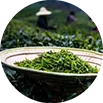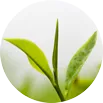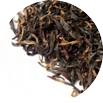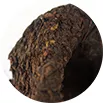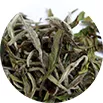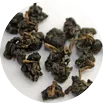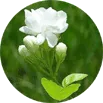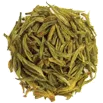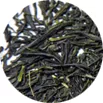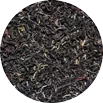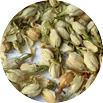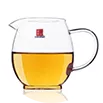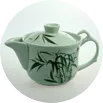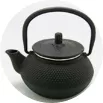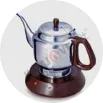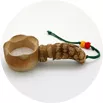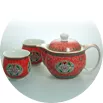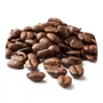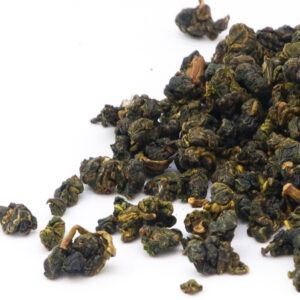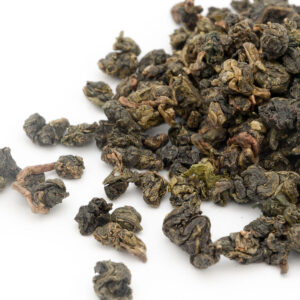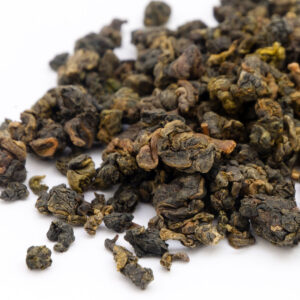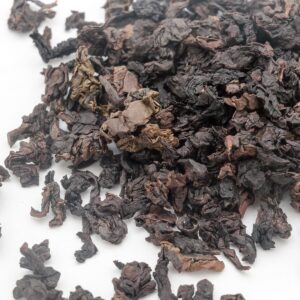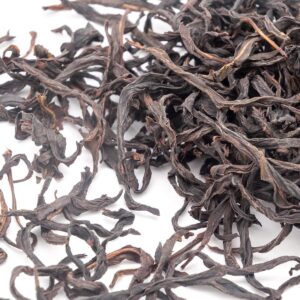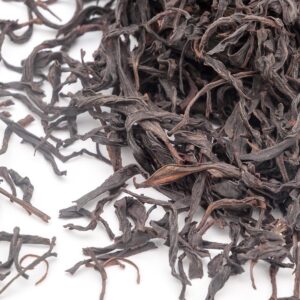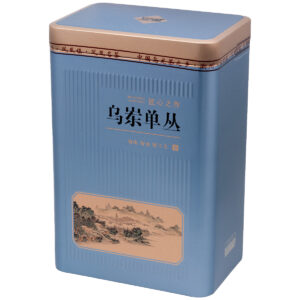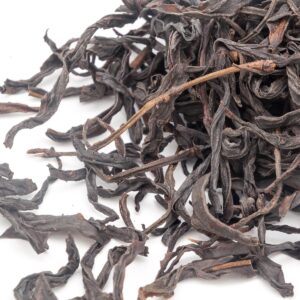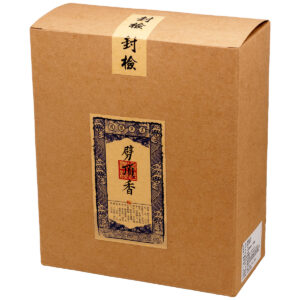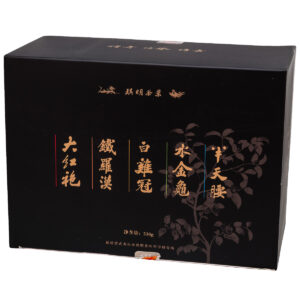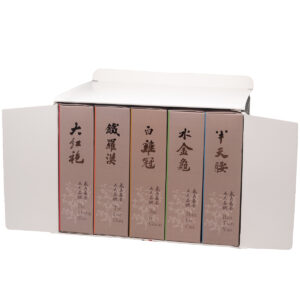Tian Li Cha
Jin Xuan Nai Xiang
A Li Shan Ruan Zhi
Ya Shi Dao Hua Xiang
Wu Dong Tong Tian Xiang
Gao Shan Superior
Tie Luo Han
"Iron arhat"-is one of the most famous rock tea in Wu Yi Shan area.
The dry leaves are dark in color and have a toasted and dark chocolate flavor. During the brewing process, the leaves are dark green. The tea soup is darker in color, balanced in taste, with a long-lasting sweet aftertaste, with a distinct floral fragrance. After the last cup of drinking, the floral-like sweetness lasts for a long time.
Tie Guan Yin Tan Bei
Wu Dong Mi Xiang
"Phoenix from Wudong" is the darker color, more baking, and therefore more obvious representative of "Phoenix" in our products. Orange tea soup, with the sweet aroma of ripe fruit, fresh and juicy taste and pleasant stimulating effect.
The tea comes from selected small batches of products from the higher altitudes of Fengshan. Completely manual processing is a matter of course, and traditional meticulous baking is also a matter of course - this is a very critical step in the processing of oolong tea, which requires a lot of skills and experience.
Set of five luxury rock teas
Oolong Teas – 乌龙茶 [wūlóng chá] – semi-oxidized tea 青茶
Partially oxidized oolong teas is a wide range of aromatic and very specific teas from lightly oxidized modern oolongs (predominantly from Taiwan) to darker and havily roasted traditional teas, especially the cliff oolongs, or yancha岩茶.
Manufacturing process:
Production of oolong teas consists of seven steps. It is the most complex process among all kinds of Chinese teas, and thus requires rich experience as well as perfectly mastered technique of the manufacturer, in order to reach high quality product. Any minor mistake in the process influences the final product` s taste. Modern oolong teas` production has been largely mechanized nowadays, however some oolong teas are produced manually until today.
Oolong teas from Taiwan:
During Qing dynasty (1644-1911), tea produced Taiwan was of a rather poor quality. The change occured in 1865, when several varieties of tea trees were imported from the mainland, along with methods of the oolong production from Fujian province. What followed was a gradual development of new techniques suited for the new land. Today, Taiwan produces high-quality tea of a distinct character – lush mountain teas from the central mountain range, usually rolled up, slightly oxidized and sometimes moderately roasted.
Origin: Bei Yun, Feng Huang Shan 北韵 凤凰山 (Phoenix Mountain), Fujian Province 福建
Types and names of oolong teas:
◦ China:
▪ Southern Fujian 福建, An Xi County: Tie Guan Yin 铁观音 (Iron Godess of Compassion), Huang Jin Gui 黄金桂 (Golden Osmanthus), Mao Xie, etc.
▪ Northern Fujian Province: Wu Yi Yan Cha 武夷岩茶, ‘cliff teas’ from Wu Yi Mountains with their typical “earth bone floral fragrance”. The most famous native and ancient cliff teas include: Da Hong Pao ‘大红袍 (Great Scarlet Robe), Tie Luo Han 铁罗汉 (Iron Monk), Bai Ji Guan 白鸡冠 (White Rooster’s Comb) and Shui Jin Gui 水金龟'(Golden Turtle). Together they are called Si Da Ming Cong 四大名丛 – literally ‘four famous bushes’.
▪ Eastern Guangdong Province 广东, Chao Zhou: Phoenix Shui Xian 凤凰水仙 type teas from “Phoenix mountain range”, Feng Huang Shan 凤凰山, are among the most interesting Chinese teas ever. Phoenix Shui Xian 水仙 is divided into Dan Cong 单丛, Lang Cai and Shui Xian, each category above has 4 quality grades and each of these grades has 3 subcategories. All ‘Phoenix Mountain’ teas are further divided by scent and/or tree type. There are approximately 100 different cultivars for the production of phoenix teas , all originating from the Shui Xian cultivar of Feng Huang Shan (Phoenix Mountains). The term Dan Cong, literally ‘lone bush/tree’, derives from the fact that each cultivar originates or has been cut from a tree originating from one of these mushu母树 ‘mother trees’. Sometimes, in the declarations of these types of teas, you can find an indication of the number of generations from the original mother tree of the fragrance.
◦ Taiwan:
▪ lightly fermented (<10%) Bao Zhong 宝种, Wen Shan Bao Zhong type
▪ fermented at 30-40%, rolled, high mountain, Dong Ding冻顶, A Li Shan 阿里山, Li Shan 里山, Shan Lin Xi, Da Yu Ling 大禹岭 type
▪ special and more fermented (50-60%) type of Dong Fang Mei Ren 东方美人 (Oriental Beauty), Bai Hao 白毫, Peng Feng Cha, Wu Si Cha, Butterfly of Taiwan etc.
Processing: The production of oolong teas consists of seven steps, so it is the most demanding tea to produce, which requires a lot of knowledge and a fully mastered technique. Every mistake during production can be seen in the resulting tea and its quality. Machines are used to a greater or lesser extent for common varieties in these days, but the best quality teas are still produced entirely by hand.
1. Fading
Harvested leaves are spread out (inside and/or outside in the sun) to soften the cell walls of the leaves (the leaves are then 'more flexible'). At the same time, excess moisture evaporates, the natural enzymatic decomposition of the leaf cells begins and any grassy taste contained in the leaves is removed
2. Shaking (overturning)
Traditional processing: The leaves are shaken in large wicker baskets or manually shaken on wicker mats to damage the leaves (preferably along the edges) and thereby begin oxidation
Modern processing: Machine crushing and partial breaking of the leaves to better balance the taste of the resulting tea
3. Oxidation
A step also used for black teas, after fading and shaking the leaves, the enzymatic decomposition of the leaf cells continues with exposure to air, the length of this step determines the degree (rate) of oxidation, which differs for individual types of oolongs from different places of origin. The leaves change color from dark green to red. At this stage the grassy, floral or fruity flavor characteristics of the tea begin to develop
4. Fixation / "kill green" shaqing杀青 or "pan-frying" This step stops the natural fermentation and growth processes inside the leaves without damaging them, using steaming, manual pressing in pans or baking
5. Rolling/forming
Tea leaves are passed through a hot and/or cold roller, where they are slightly broken and shaped, which gives them shape and intensifies the taste of the resulting tea
6. Drying
Stabilizes any moisture inside the leaves, stops fermentation (oxidation), prevents mold growth, removes the grassy taste of the leaves and develops the flavor of the tea. Drying in the sun, in pans or with hot air is used
7. Baking
different methods of roasting/baking in pans or in wicker baskets using coal or electricity to achieve a smoky or fruity aroma.
Lesser quality teas are often roasted a little more to cover up their potential flaws and to make them smell better. Such teas can be recognized by the fact that they only taste roasted without a floral or fruity aftertaste, which is completely absent. Cliff teas, which are traditionally more roasted, are normally left to age for some time (a few months to a year) and then briefly roasted once more, packaged and exported. In very fresh 'yan cha', the roastiness can be very strong, but should never completely dominate.
History: Oolong teas, as we know them today, are the result of a long-term development that began around the Tang Dynasty (608-907) in the Bei Yun region of Fujian Province. It was originally known as 'Beiyun tea' (according to the place of origin) and the news about it spread due to its high quality and unique taste. During the Song Dynasty (960-1279), it was chosen as the first tea to be paid to the imperial court ('Tribute tea'). The emperor always chose the regions whose tea would be taken to the court, which was always a huge honor and good for business at the same time.
In time, government officials, monks and scholars began to visit the areas of Fujian province, and they were all surprised by the strong and distinct taste of the 'bones of the earth' teas originating from the Wu Yi Mountains, which was so far from the taste of green tea, the only commonly known type at that time. These teas came to be known as 'Yan Cha' or 'cliff teas'. The emperor, hearing about these teas, had a sample of pressed green tea sent to Wu Yi and asked for the tea in return as a gift for the imperial court. The emperor then received back a pressed 'Yan Cha' with a dragon and phoenix pattern embossed on the surface, which became very famous.
The fame of Wu Yi teas spread to the general public, and teas from this area were regularly presented to the imperial court during the Ming (1368-1644) and Qing (1644-1911) dynasties.
In 1725, tea producers in the An Xi region in southern Fujian adapted the tea production methods from Wu Yi, further improved them and thus gave birth to a new type of tea – oolong. During the reign of the Qing Dynasty (1796–1895), several varieties of the tea tree were imported to Taiwan from mainland China, mainly from the Fujian province (until then, only low-quality tea was grown here). Thanks to the gradual development of its own processing techniques and breeding of its own varieties, tea of very high quality and unique character began to be produced here.
The anglicized word oolong, commonly used today, is only a phonetic transcription of the Chinese 'wu long', which can be translated into English as a 'Black dragon'.
Health: Oolongs commonly contain: caffeine, flavonol, tea polyphenols, vitamins C and E, catechins, carotene and minerals.
The following beneficial effects of oolongs on health are traditionally reported:
◦ polyphenols prevent tooth decay
◦ high vitamin C content has a beneficial effect on the skin
◦ help against skin irritation
◦ support enzymes that break down fats and generally improve metabolism
◦ lower blood cholesterol levels
◦ they relax the abdominal muscles
◦ regulate body temperature


